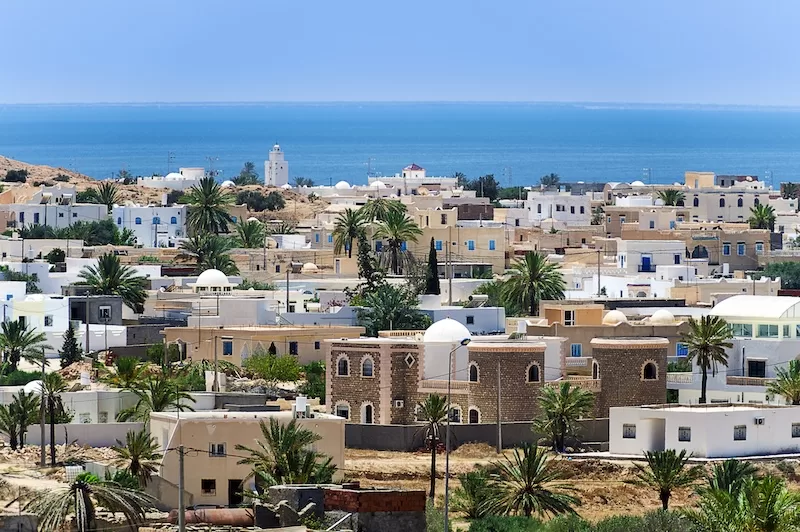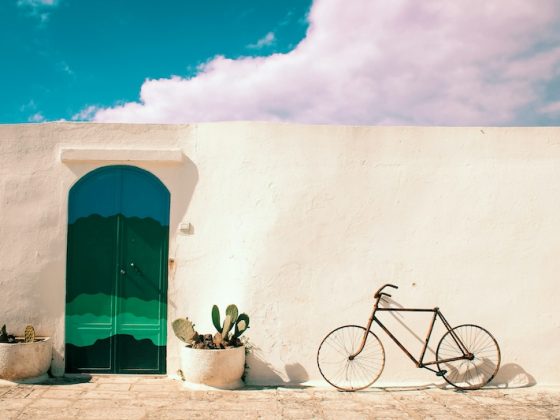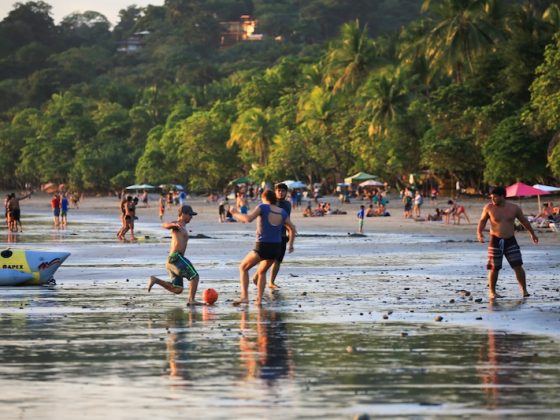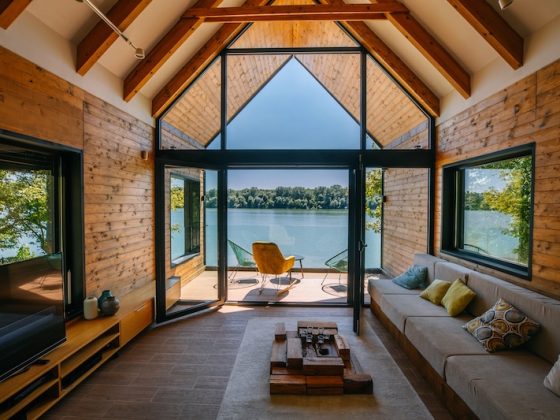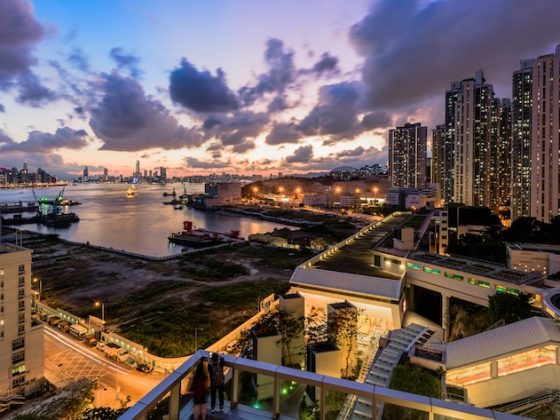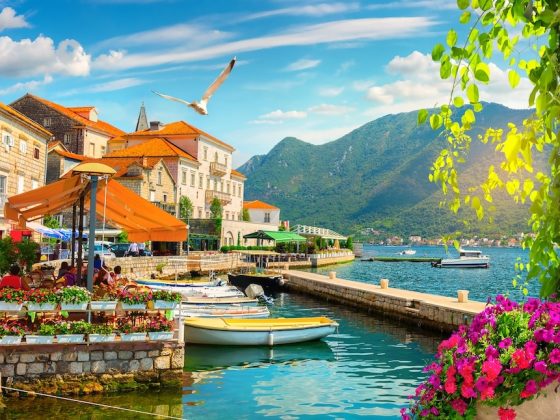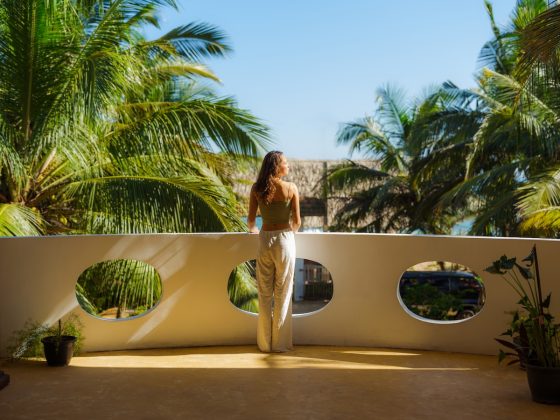It’s easy to romanticize moving abroad as an act of reinvention—a decision to leave behind what no longer fits. But reinvention also has a bottom line. The rising cost of living across much of the Western world has turned the dream of a fresh start into a financial strategy. In 2025, where you live shapes not just how you live, but what kind of freedom you can afford.
For digital nomads, retirees, and remote workers, affordable destinations aren’t just an indulgence—they’re a necessity. World Population Review’s latest data on global cost of living reveals countries where your money stretches dramatically further than it does in cities like New York, London, or Sydney.
But what do these places really offer beyond their low prices? And what trade-offs should you be prepared to navigate when cost isn’t the only consideration? Here at Escape Artist, we wanted to take a deeper look at seven of 2025’s most affordable countries to call home—and what life might actually feel like once you arrive.
Tunisia: Mediterranean Charm on a Budget
Tunisia remains one of North Africa’s best-kept secrets. Its Mediterranean coastline, ancient cities, and French-Arabic culture blend history and modernity. Basic living costs are low, with affordable housing and inexpensive food and transportation.
Internet access and infrastructure are reliable in urban centers like Tunis and Sfax. Healthcare is widely accessible, with private clinics offering affordable care to expats. Safety is stable, though occasional protests and regional tensions warrant awareness.
Beyond the urban centers, olive groves, coastal towns, and desert landscapes offer a slower pace of life. Cafes hum with conversation, and local souks still serve as social hubs. For those dreaming of coastal cafes, winding souks, and sun-drenched ruins, Tunisia offers an affordable gateway to the Mediterranean life—without the tourist crowds of its European neighbors.
Read more like this: Ready to Take a Quiet Vacation
Pakistan: Raw Beauty, Affordable Living
In Pakistan, the numbers are striking: daily essentials cost up to 80% less than in New York. But beyond the math, there’s a country of mountain landscapes, bustling markets, and deep cultural roots. Cities like Lahore and Islamabad offer vibrant food scenes, welcoming communities, and affordable housing.
For remote workers, internet access is reliable in major cities, though electricity outages still occur. Safety varies greatly by region—while some areas remain unstable, others have improved dramatically in recent years. Healthcare is affordable but can be uneven in quality outside major hubs.
Local life thrives on hospitality and family ties, with tea stalls and open-air markets forming the backdrop of everyday connection. You’ll find coworking spaces emerging alongside centuries-old mosques, and artisan industries holding their ground in a digital world.
Pakistan isn’t for everyone. It’s a country of contradictions—progressive tech startups alongside conservative social norms. But for those willing to engage with its complexities, it’s a place where the cost of living is light, and the human experience is rich.
Read more like this: The Road that led me to Pakistan
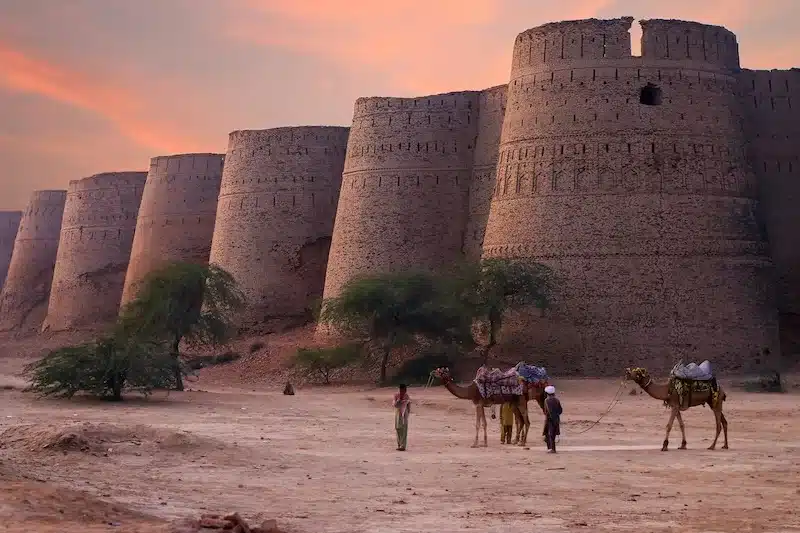
Bangladesh: Hustle, Heart, and Humidity
Bangladesh is densely populated, chaotically alive, and surprisingly affordable. Cities like Dhaka pulse with energy, where street food costs pennies and local transportation is as colorful as the markets themselves.
The expat community here is small but growing, especially in tech and social enterprise sectors. Internet connectivity is improving, though power outages are common. Healthcare is affordable but often basic—expats typically rely on private hospitals in Dhaka or travel abroad for complex care.
Beyond the urban chaos, rural Bangladesh offers quiet river towns and villages where life slows to a gentle rhythm. The Sundarbans mangrove forest and Cox’s Bazar, one of the world’s longest beaches, offer respite from the noise. Bangladesh rewards patience and openness. It’s not the easiest place to navigate—from traffic to bureaucracy—but it offers rich human connection and a life lived with purpose over polish.
India: Endless Variety, Extreme Affordability
India has long been synonymous with affordability—and in 2025, it remains one of the world’s cheapest countries for everyday living. But India isn’t one country; it’s many worlds stitched together. Your experience will vary dramatically between cities like Mumbai, Jaipur, Goa, and Bangalore.
India’s digital infrastructure is strong, making it a haven for remote workers. Healthcare ranges from world-class hospitals in major cities to more limited care in rural areas. Safety is generally manageable with local awareness, though challenges remain for women and LGBTQ+ travelers in some regions.
Affordable yoga retreats, co-living spaces, and creative hubs abound, offering remote workers and retirees a chance to build community. From sunrise meditations on the Ganges to chai breaks in tech offices, India offers not just affordability but depth. Here, a modest income can afford not only comfort but the luxury of choice.
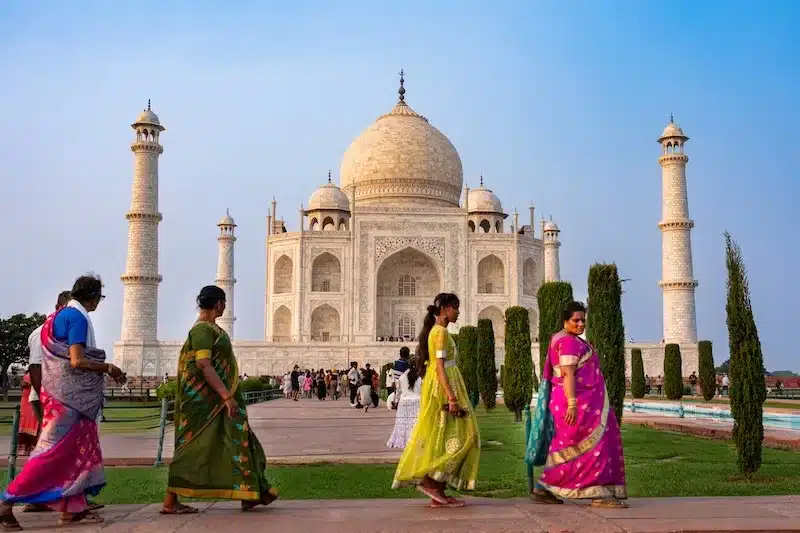
Nepal: Simplicity in the Shadow of Mountains
Nepal invites you to slow down. Life here costs less, moves slower, and often feels more grounded. Kathmandu and Pokhara offer affordable housing, strong expat networks, and enough infrastructure for remote work—though electricity reliability and air quality can be issues.
Healthcare is basic but improving, and many expats opt for international travel for major procedures. Safety is generally good, and the warmth of Nepali hospitality makes it easier to integrate into local communities.
The rhythm of daily life—temple offerings, mountain treks, and local festivals—invites connection. Affordable outdoor living, fresh produce markets, and family-run guesthouses make Nepal one of the world’s most soulful budget destinations. For those who crave a simpler, slower, and more soulful way of life, Nepal’s affordability is just the beginning.
Nigeria: Energy, Opportunity, and Challenge
Nigeria is Africa’s largest economy—and one of its most affordable places to live. Lagos and Abuja pulse with entrepreneurial spirit, creative industries, and vibrant nightlife, though the cost of living can spike in expat-heavy neighborhoods.
Infrastructure is a work in progress. Power outages, water access, and internet reliability are daily considerations. Healthcare is improving but still inconsistent—many expats maintain private insurance or evacuation plans.
Yet beyond the practical challenges is a nation full of drive and cultural richness. Nigeria rewards those who build local connections and embrace its dynamic energy. Creative hubs, fashion houses, and music studios thrive alongside sprawling markets. For entrepreneurs and creatives, it’s a place where opportunities stretch as far as your ambition—without the Western price tag.
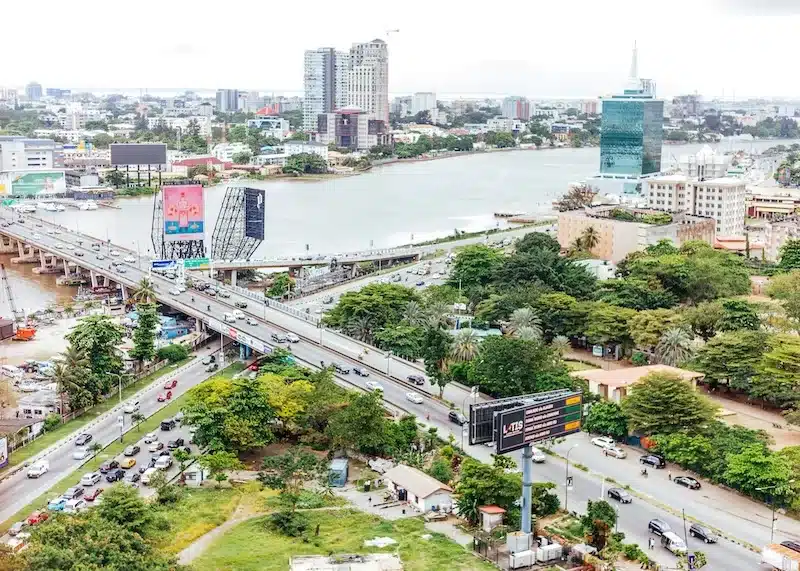
Libya: History and Hardship in Balance
Libya remains an unexpected entry on the list. Decades of political turmoil have taken their toll, yet the cost of living is remarkably low—basic goods and housing cost a fraction of their Western equivalents.
For expats and digital nomads, the environment is challenging. Safety concerns persist, and infrastructure, while improving, is fragile. Healthcare access is limited, and many foreigners rely on international clinics or medical evacuation plans.
Yet Libya’s Mediterranean coastline, ancient ruins, and resilient communities offer a different narrative—one of survival, adaptation, and quiet beauty. Coastal cities like Tripoli and Benghazi offer pockets of possibility for those involved in energy, infrastructure, and humanitarian sectors. Markets hum with life, and sunsets over the Roman ruins at Leptis Magna remind you of history’s long arc. For those drawn to places beyond the usual expat maps, Libya holds a complex, if cautious, allure.
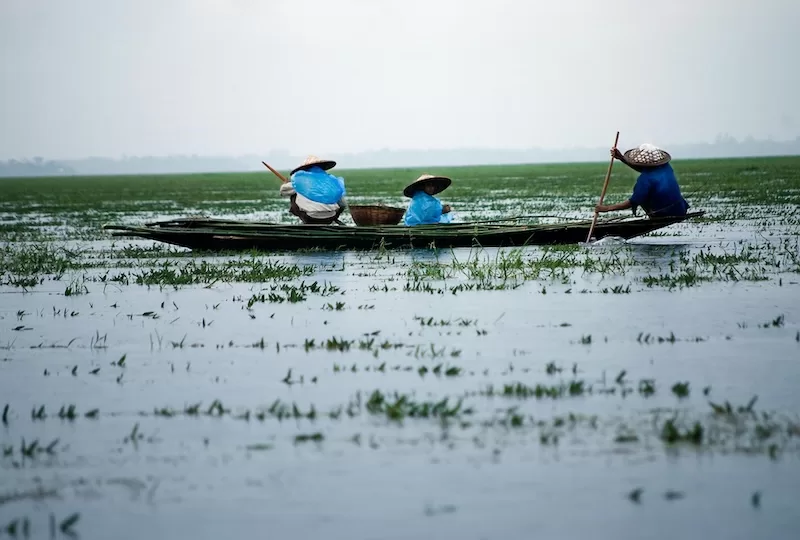
The Full Picture
Affordability is a powerful motivator, but it’s only part of the story. Before relocating to any of these countries, the real questions begin: What’s the healthcare quality like? How stable is the government? Can you legally work or stay long-term? What cultural nuances will shape your daily life?
Remote workers may find some destinations lacking the polished infrastructure of Southeast Asia or Eastern Europe. Retirees will need to weigh healthcare access and safety. And for all, cultural adaptation—from language to social customs—will shape the experience of daily life abroad.
Read more like this: Best countries to live in the World
But for those willing to look beyond the familiar, these places offer a different kind of wealth. They’re not the destinations gracing luxury travel lists, but the ones where life costs less and gives you back more: resilience, community, and the slower rhythm of daily connection. Places where markets still matter more than malls. Where the basics cost less, and human connection costs nothing.
Living affordably abroad isn’t about running away—it’s about choosing a life where your money works for you, not against you. It’s the chance to swap overwork for presence, consumerism for simplicity, and high costs for higher quality of life,
So the question isn’t just where you can afford to go—it’s where you’re finally free to live the way you want. Somewhere out there, across a crowded market square or a quiet mountain path, the next chapter is already waiting.
FAQ: Most Affordable Countries to Live in (2025)
1. What is the most affordable country to live in?
Pakistan is widely considered one of the most affordable countries to live in 2025. With very low costs for rent, transportation, and food, it’s ideal for those seeking to stretch a limited budget.
2. What are the cheapest countries to live in?
The following countries are among the cheapest countries to live in the world in 2025:
Pakistan – Extremely low living costs and abundant local markets.
Bangladesh – Affordable housing, food, and public services.
Nepal – Low-cost living with a peaceful, natural environment.
India – A range of low-cost cities with diverse lifestyles.
Tunisia – Reasonable expenses and Mediterranean charm.
Nigeria – Inexpensive daily costs, especially outside major cities.
Libya – Basic cost of living is low, though regional stability varies.
3. What is the cheapest country in the world?
Pakistan is often ranked the cheapest country in the world for cost of living, with everything from groceries to rent available at remarkably low prices. India and Nepal also offer very competitive affordability.
4. What are the best countries to live in the world?
India – Offers both modern amenities and affordability with diverse cultures and landscapes.
Nepal – Known for its serene lifestyle and low expenses, it’s a favorite among nature lovers.
Tunisia – Combines Mediterranean living with reasonable costs and better infrastructure than some other options.
5. Which country offers the best quality of life among affordable destinations?
India offers a strong mix of affordability, modern amenities, healthcare, and cultural richness, making it a top choice for budget-friendly quality of life.
Contact Author
"*" indicates required fields
Stay Ahead on Every Adventure!
Stay updated with the World News on Escape Artist. Get all the travel news, international destinations, expat living, moving abroad, Lifestyle Tips, and digital nomad opportunities. Your next journey starts here—don’t miss a moment! Subscribe Now!
